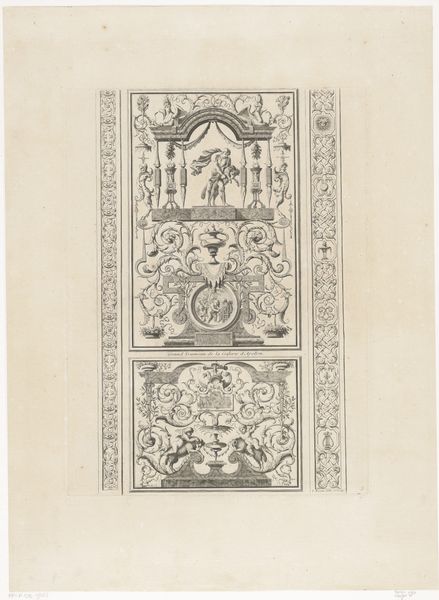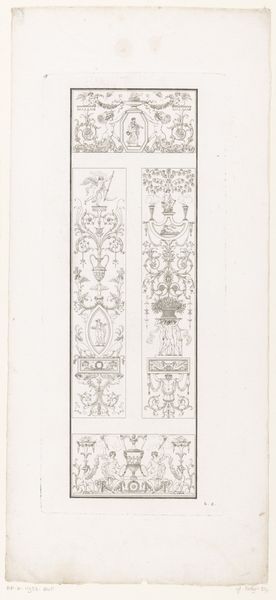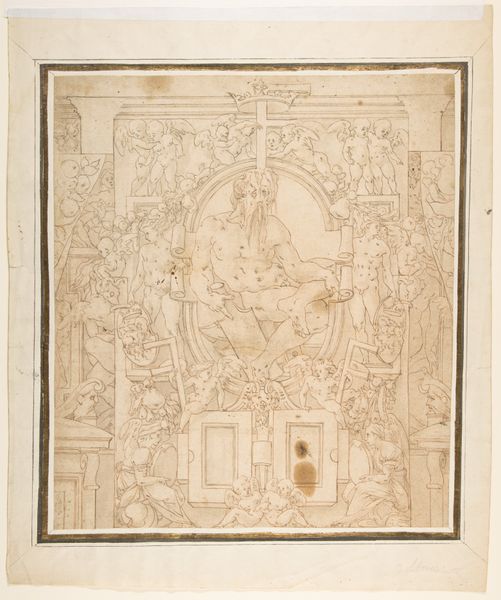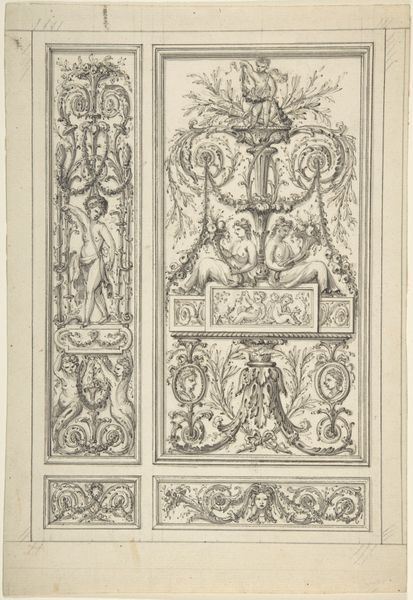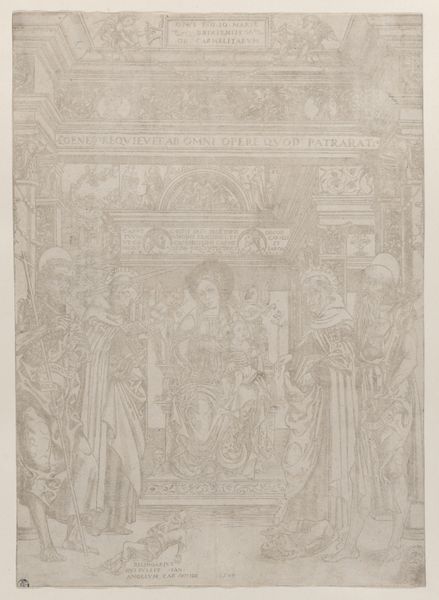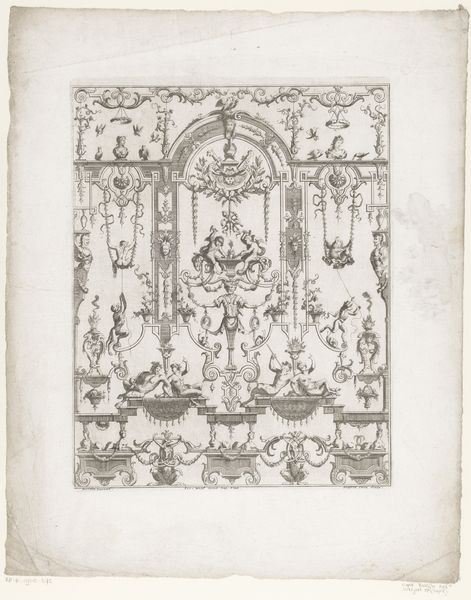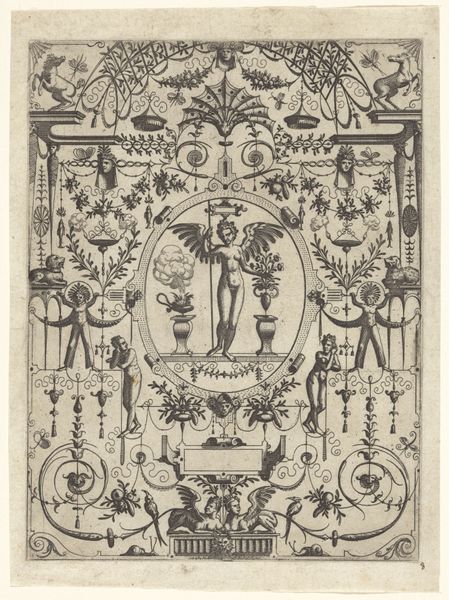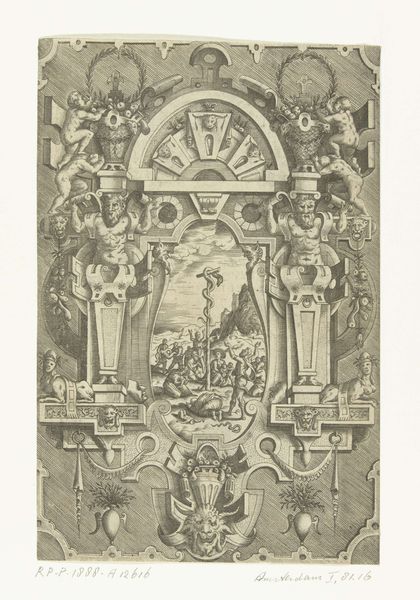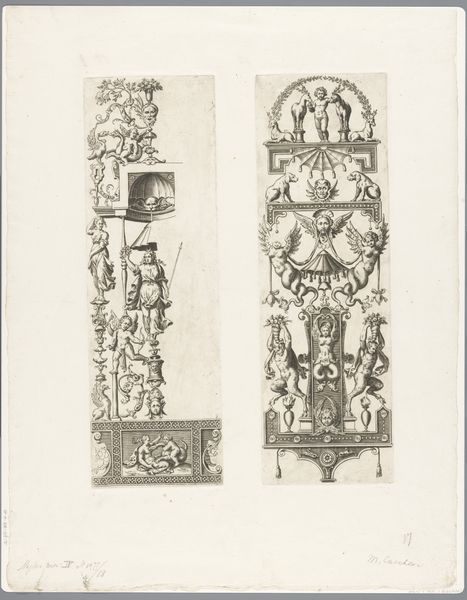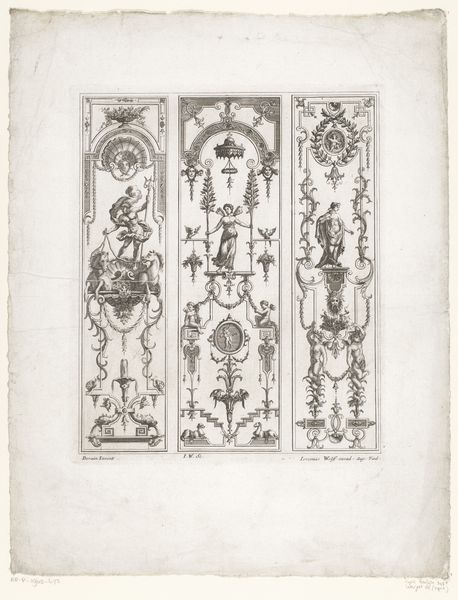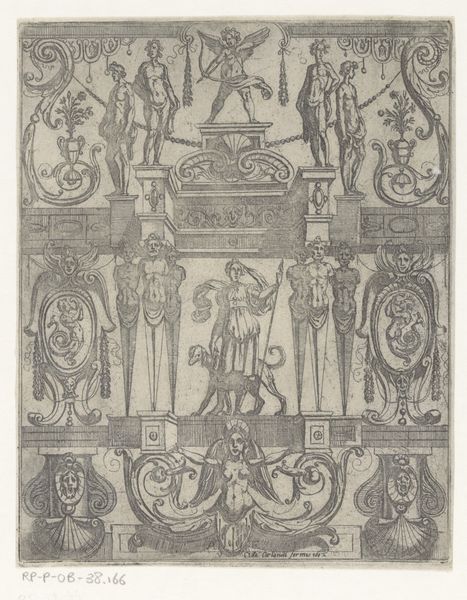
graphic-art, print, engraving
#
graphic-art
# print
#
old engraving style
#
woodcut effect
#
linocut print
#
line
#
history-painting
#
engraving
Dimensions: height 532 mm, width 408 mm
Copyright: Rijks Museum: Open Domain
Curator: This print, "Grafzerk van de familie van Adrichem," dating from 1846 to 1881 by Pieter Jacobus Mulder, is a fascinating example of 19th-century engraving. Editor: Yes, it’s incredibly detailed. I find the intricate line work gives it such a formal and somewhat austere feeling. What strikes you most about this piece? Curator: I’m drawn to how this print functions as a historical record and a statement of power. It commemorates a family, the van Adrichems, embedding their identity within a visual language that evokes lineage, status, and perhaps even political influence. Editor: That makes sense. I see the heraldry and the rather severe figures, but how does that connect to a larger conversation? Curator: Well, let’s consider the 19th century context. The rise of industrialization saw a romanticisation of the past. Genealogy and heraldry experienced something of a revival. In this light, how does the “Grafzerk” act as a response to shifting social and political landscapes? What does it mean to inscribe a family's history in such a public and permanent way during that period? Does it speak to anxieties about social mobility? Editor: So it's more than just a gravestone rubbing, it's also a social document? Curator: Precisely! We might even see a tension here – a negotiation between preserving tradition and engaging with the present. Do you notice how certain aesthetic choices lean towards older styles, like a deliberate echoing of medieval art? This could be a form of social resistance, a conscious decision to create an "us" versus "them" in an era of rapid change. Editor: That’s a very interesting way to look at it. I was so focused on the detail that I missed the bigger picture. Thanks! Curator: The power of art lies in how it reflects and shapes society’s dialogue, so always remember to read through a political lens!
Comments
No comments
Be the first to comment and join the conversation on the ultimate creative platform.
